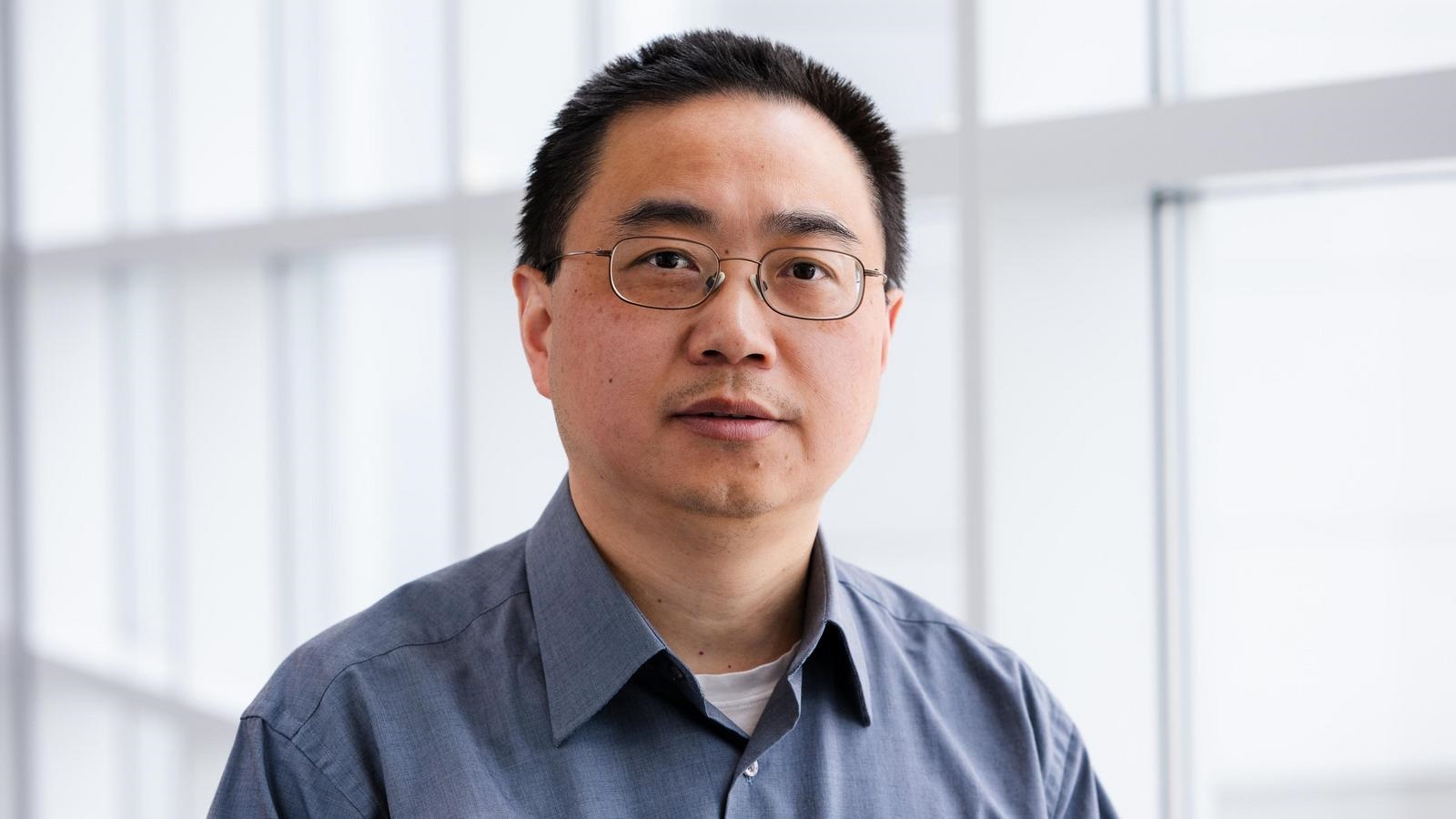The Argonne engineer and physicist has overseen the construction of light sources around the globe
BY JENNA V. WRAY | JUNE 17, 2025
Cheng’s recent focus is upgrading diagnostic technology at Argonne’s Advanced Photon Source.

Weixing Cheng has some advice for young people trying to build their careers.
“Don’t wait for people to tell you what to do,” he said. “Be flexible, find something that needs doing and do it. Work ethic and passion will take you far.”
Those words are essentially the story of Cheng’s life. His passion for learning, evident at an early age, set him on a course that took him far beyond his hometown in rural China and landed him at the forefront of accelerator beam diagnostics. Cheng is now leader of the Diagnostics Group at the Advanced Photon Source (APS), a U.S. Department of Energy (DOE) Office of Science user facility at DOE’s Argonne National Laboratory.
“The upgraded Advanced Photon Source is the most advanced facility, and our goal is to deliver the highest quantity of photons to the users.” — Weixing Cheng, Argonne National Laboratory
What does the Diagnostics Group do? They design and implement methods to maintain the highest quality electron and X-ray beams for research, making sure that scientists who use the APS have the most stable beams at their disposal.
“Diagnostics are important because they measure the electron and photon beam to high accuracy and improve their stabilities,” he explained. “If the beam gets unstable, it can affect the quality of the data, so we need to be able to detect and correct with the best tools.”
Cheng was introduced to accelerator physics at the prestigious University of Science and Technology of China, where he earned a bachelor’s degree in physics.
“My parents didn’t have the opportunity for a good education,” Cheng explained, “so becoming a first-generation college student was a big leap for me.”
Cheng quickly became familiar with how particle accelerators and light sources work. He offered an analogy for visualizing how light sources (such as the APS) generate X-ray beams that are useful for experiments.
“Imagine the electrons as people running,” said Cheng. “They run faster and faster and faster. When they get to the storage ring, they’re forced to ‘bend’ their path. This makes them ‘tired,’ and the energy they lose turns into X-ray beams.”
Studying particle physics and X-rays motivated Cheng to learn even more. His interest took him to Shanghai, the second-largest city in China, to earn a doctorate in Engineering.
“I arrived at the perfect time,” Cheng recalled, smiling. “The Shanghai Light Source was being planned, so I got to do research and development for the machine.”
After that, the newly minted doctor embarked on a global journey. In 2004, he moved to KEK, Japan’s high-energy accelerator research organization, to work as a post-doctoral researcher. He immersed himself in accelerator technology, especially feedback systems and beam position monitors.
Cheng reflected, “Those were some of my most productive years. I was working alone, day and night, in the basement of the facility. It was a fun time, and I really enjoyed the hands-on nature of the work.”
In 2007, Cheng decided he was ready for a change. This time, he moved to the west coast of the United States to join DOE’s SLAC National Accelerator Laboratory. At SLAC, he gained more experience with photon diagnostics and the construction of new beamlines.
A year later, Cheng went further east — all the way to New York, home of the DOE’s Brookhaven National Laboratory. There, he spent over a decade working on the construction of another light source.
Brookhaven’s National Synchrotron Light Source II (NSLS-II) was an empty field when Cheng arrived.
“I was there for the entire process,” he said with pride. “I saw the NSLS-II from the design stage, to construction, to commissioning, to full operation. It was incredibly rewarding to see a machine’s ‘first light’ in a place where there used to be nothing but grass.”
When the NSLS-II was up and running, Cheng found himself hungry for a new challenge. When he heard about the advancements being made at the APS, he wanted to be involved.
The APS was planning to install a powerful new storage ring. As a major part of the APS Upgrade (APS-U) project, the new ring installation — along with many other aspects of the facility receiving updates — would keep the APS as a world leader in accelerator technology.
In 2019, Cheng got his wish. He joined the APS-U project as the diagnostics control account manager. Over the past few years, he’s overseen many improvements to the APS’s diagnostic systems, from design to construction to eventual commissioning.
“The APS-U is the most advanced facility, and our goal is to deliver the highest quantity of photons to the users,” Cheng said.
He’s now shifting his focus to operations. As a leader of the Diagnostics group, Cheng oversees all diagnostic systems.
Fortunately, Cheng is now working with the most cutting-edge technology. For example, the new Beam Position Monitor installed at the APS can measure the position of the electron beam to 100 nanometers of resolution — about a thousand times smaller than the width of a human hair. “Or less!” Cheng added.
Looking ahead, Cheng is excited about future projects and improvements.
“We know the machine has been commissioned and delivers photons to users, but there’s a lot more we want to do,” he noted. “I’m excited for another big project already!”
